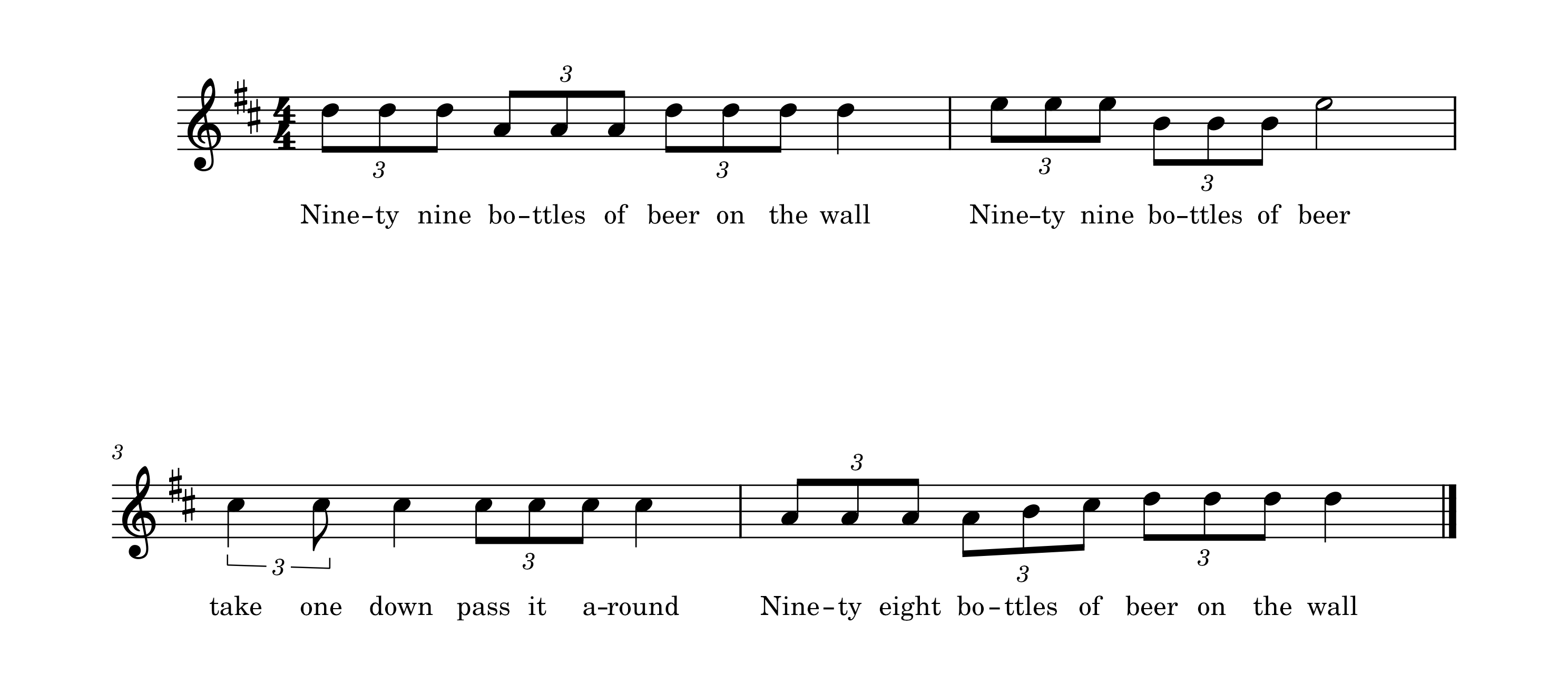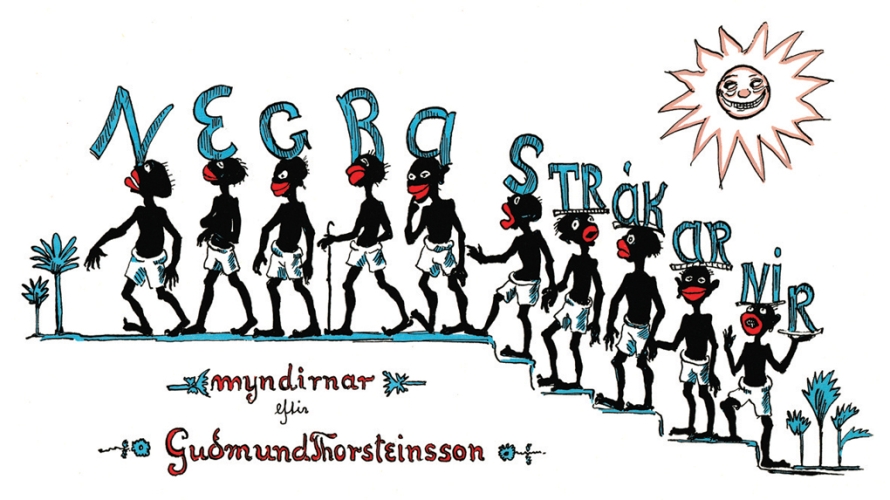|
Ten Green Bottles
"Ten Green Bottles" is a popular children's repetitive song that consists of a single verse of music that is repeated, with each verse decrementing by one the number of bottles on the wall. The first verse is: This pattern continues until the number of bottles reaches zero. The final verse ends "There'll be no green bottles hanging on the wall." Various other versions of the lyrics exist, many of them vulgar or satirical. See also * Repetitive song * "99 Bottles of Beer" * "Ten German Bombers" * "Ten Little Injuns "Ten Little Indians" is a traditional American children's counting out rhyme. It has a Roud Folk Song Index number of 12976. The term "Indians" in this sense refers to Indigenous North American peoples. In 1868, songwriter Septimus Winner ada ..." References English children's songs English folk songs Traditional children's songs British culture Fictional objects Year of song unknown Songwriter unknown Cumulative songs {{Song-stub ... [...More Info...] [...Related Items...] OR: [Wikipedia] [Google] [Baidu] |
Nursery Rhyme
A nursery rhyme is a traditional poem or song for children in Britain and many other countries, but usage of the term dates only from the late 18th/early 19th century. The term Mother Goose rhymes is interchangeable with nursery rhymes. From the mid-16th century nursery rhymes begin to be recorded in English plays, and most popular rhymes date from the 17th and 18th centuries. The first English collections, ''Tommy Thumb's Song Book'' and a sequel, ''Tommy Thumb's Pretty Song Book'', were published by Mary Cooper (publisher), Mary Cooper in 1744. Publisher John Newbery's stepson, Thomas Carnan, was the first to use the term Mother Goose for nursery rhymes when he published a compilation of English rhymes, ''Mother Goose's Melody, or, Sonnets for the Cradle'' (London, 1780). History Lullabies The oldest children's songs of which we have records are Lullaby, lullabies, intended to help a child fall asleep. Lullabies can be found in every human culture. The English term lullaby i ... [...More Info...] [...Related Items...] OR: [Wikipedia] [Google] [Baidu] |
Repetitive Song
Repetitive songs contain a large proportion of repeated words or phrases. Simple repetitive songs are common in many cultures as widely spread as the Caribbean, Southern India and Finland. The best-known examples are probably children's songs. Other repetitive songs are found, for instance, in African-American culture from the days of slavery. Structure Self referential songs quote their own lyrics; one example is "The Song That Never Ends". Cumulative songs build from one verse to another, like bricks on a pile, as in "Old McDonald Had a Farm". 'Counting songs' may count up or down, as with "99 Bottles of Beer". Another type of song describes a circular phenomenon (see Recursion). In " There's a Hole in My Bucket", the singer-narrator attempts to fix a leaky bucket, only to find out that ultimately one needs to have a functional bucket in order to effect the repair. In "Where Have All the Flowers Gone?", flowers were offered to soldiers, who fell in a war, new flowers grew on t ... [...More Info...] [...Related Items...] OR: [Wikipedia] [Google] [Baidu] |
Verse (music)
Song structure is the arrangement of a song, and is a part of the songwriting process. It is typically sectional, which uses repeating forms in songs. Common forms include bar form, 32-bar form, verse–chorus form, ternary form, strophic form, and the 12-bar blues. Popular music songs traditionally use the same music for each verse or stanza of lyrics (as opposed to songs that are "through-composed"—an approach used in classical music art songs). Pop and traditional forms can be used even with songs that have structural differences in melodies. The most common format in modern popular music is introduction (intro), verse, pre-chorus, chorus, verse, pre-chorus, chorus, bridge, and chorus. In rock music styles, notably heavy metal music, there is usually one or more guitar solos in the song, often found after the middle chorus part. In pop music, there may be a guitar solo, or a solo performed with another instrument such as a synthesizer or a saxophone. The foundation of popular ... [...More Info...] [...Related Items...] OR: [Wikipedia] [Google] [Baidu] |
Repetitive Song
Repetitive songs contain a large proportion of repeated words or phrases. Simple repetitive songs are common in many cultures as widely spread as the Caribbean, Southern India and Finland. The best-known examples are probably children's songs. Other repetitive songs are found, for instance, in African-American culture from the days of slavery. Structure Self referential songs quote their own lyrics; one example is "The Song That Never Ends". Cumulative songs build from one verse to another, like bricks on a pile, as in "Old McDonald Had a Farm". 'Counting songs' may count up or down, as with "99 Bottles of Beer". Another type of song describes a circular phenomenon (see Recursion). In " There's a Hole in My Bucket", the singer-narrator attempts to fix a leaky bucket, only to find out that ultimately one needs to have a functional bucket in order to effect the repair. In "Where Have All the Flowers Gone?", flowers were offered to soldiers, who fell in a war, new flowers grew on t ... [...More Info...] [...Related Items...] OR: [Wikipedia] [Google] [Baidu] |
99 Bottles Of Beer
"99 Bottles of Beer" or "100 Bottles of Pop on the Wall" is a song dating to the mid-20th century. It is a traditional reverse counting song in both the United States and Canada. It is popular to sing on road trips, as it has a very repetitive format which is easy to memorize and can take a long time when families sing. In particular, the song is often sung by children on long school bus trips, such as class field trips, or on Scout or Girl Guide outings. Lyrics The song's lyrics are as follows, with mathematical values substituted: (n) bottles of beer on the wall. (n) bottles of beer. Take one down, pass it around, (n-1) bottles of beer on the wall. (caution: this mathematical formula ends with n=1, the song does not use negative numbers). Alternative line: If one of those bottles should happen to fall, 98 bottles of beer on the wall... The same verse is repeated, each time with one bottle fewer, until there is none left. Variations on the last verse following the las ... [...More Info...] [...Related Items...] OR: [Wikipedia] [Google] [Baidu] |
Ten German Bombers
"Ten German Bombers" is a children's song, originally sung by British schoolchildren during World War II, and also the British Military. It has been adopted as a football chant by English football fans at matches against Germany. The song has recently been criticised as discriminatory by both the UEFA and the FA with fans chanting it facing bans from competitions. Lyrics "Ten German Bombers" makes reference to German bombers and defensive action by the RAF during World War II. It is sung to tune of "She'll Be Coming 'Round the Mountain". It is a simple repetitive song and the verse pattern follows a cumulative song format, similar to "Ten Green Bottles": These verses are then repeated with one more bomber being shot down each time. The 10th verse becomes "There was one" and "shot it down". The last verse becomes "There were no German bombers in the air" and "’Cause the RAF from England shot them down". In football Since the beginning of the 1990s, the song has been sung ... [...More Info...] [...Related Items...] OR: [Wikipedia] [Google] [Baidu] |
Ten Little Injuns
"Ten Little Indians" is a traditional American children's counting out rhyme. It has a Roud Folk Song Index number of 12976. The term "Indians" in this sense refers to Indigenous North American peoples. In 1868, songwriter Septimus Winner adapted it as a song, then called "Ten Little Injuns", for a minstrel show. Lyrics The modern lyrics for the children's rhyme are: \relative c' \addlyrics Minstrel song Songwriter Septimus Winner created an elaborated version of the children's song, called "Ten Little Injuns", in 1868 for a minstrel show. Derivative songs and books It is generally thought that this song was adapted, possibly by Frank J. Green in 1869, as "Ten Little Niggers", though it is possible that the influence was the other way around, with "Ten Little Niggers" being a close reflection of the text that became "Ten Little Indians". Either way, "Ten Little Niggers" became a standard of the blackface minstrel shows. It was sung by Christy's Minstrels and became ... [...More Info...] [...Related Items...] OR: [Wikipedia] [Google] [Baidu] |
English Children's Songs
English usually refers to: * English language * English people English may also refer to: Peoples, culture, and language * ''English'', an adjective for something of, from, or related to England ** English national identity, an identity and common culture ** English language in England, a variant of the English language spoken in England * English languages (other) * English studies, the study of English language and literature * ''English'', an Amish term for non-Amish, regardless of ethnicity Individuals * English (surname) English is an English surname. Notable people with the surname include: *Alex English (born 1954), American basketball player * Arthur English (1919–1995), English actor and comedian *Bill English (born 1961), New Zealand politician and Prime Mini ..., a list of notable people with the surname ''English'' * People with the given name ** English McConnell (1882–1928), Irish footballer ** English Fisher (1928–2011), Am ... [...More Info...] [...Related Items...] OR: [Wikipedia] [Google] [Baidu] |
English Folk Songs
The folk music of England is a tradition-based music which has existed since the later medieval period. It is often contrasted with courtly, classical and later commercial music. Folk music traditionally was preserved and passed on orally within communities, but print and subsequently audio recordings have since become the primary means of transmission. The term is used to refer both to English traditional music and music composed or delivered in a traditional style. There are distinct regional and local variations in content and style, particularly in areas more removed from the most prominent English cities, as in Northumbria, or the West Country. Cultural interchange and processes of migration mean that English folk music, although in many ways distinctive, has significant crossovers with the music of Scotland. When English communities migrated to the United States, Canada and Australia, they brought their folk traditions with them, and many of the songs were preserved by i ... [...More Info...] [...Related Items...] OR: [Wikipedia] [Google] [Baidu] |
Traditional Children's Songs
A tradition is a belief or behavior (folk custom) passed down within a group or society with symbolic meaning or special significance with origins in the past. A component of cultural expressions and folklore, common examples include holidays or impractical but socially meaningful clothes (like lawyers' wigs or military officers' spurs), but the idea has also been applied to social norms such as greetings. Traditions can persist and evolve for thousands of years—the word ''tradition'' itself derives from the Latin ''tradere'' literally meaning to transmit, to hand over, to give for safekeeping. While it is commonly assumed that traditions have an ancient history, many traditions have been invented on purpose, whether that be political or cultural, over short periods of time. Various academic disciplines also use the word in a variety of ways. The phrase "according to tradition", or "by tradition", usually means that whatever information follows is known only by oral traditio ... [...More Info...] [...Related Items...] OR: [Wikipedia] [Google] [Baidu] |
British Culture
British culture is influenced by the combined nations' history; its historically Christian religious life, its interaction with the cultures of Europe, the traditions of England, Wales, Scotland and Ireland and the impact of the British Empire. Although British culture is a distinct entity, the individual cultures of England, Scotland, Wales and Northern Ireland are diverse and have varying degrees of overlap and distinctiveness. British literature is particularly esteemed. The modern novel was invented in Britain, and playwrights, poets, and authors are among its most prominent cultural figures. Britain has also made notable contributions to music, cinema, art, architecture and television. The UK is also the home of the Church of England, the state church and mother church of the Anglican Communion, the third-largest Christian denomination. Britain contains some of the world's oldest universities, has made many contributions to philosophy, science, technology and medicine, and ... [...More Info...] [...Related Items...] OR: [Wikipedia] [Google] [Baidu] |






.png)

